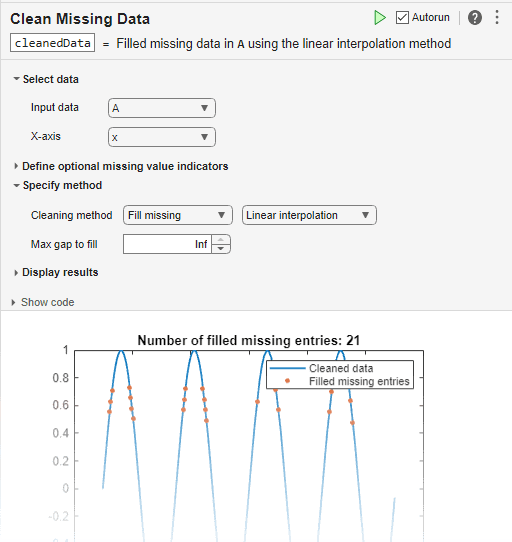rmmissing
Remove missing entries
Description
R = rmmissing(A)A is a vector, then
rmmissing removes any entry that contains missing data. If
A is a matrix or table, then rmmissing removes any row
that contains missing data.
Missing values are defined according to the data type of A:
NaN—double,single,duration, andcalendarDurationNaT—datetime<missing>—string<undefined>—categorical{''}—cellof character vectors
If A is a table, then the data type of each variable defines the missing
value for that variable.
You can use rmmissing functionality interactively by adding the
Clean Outlier
Data task to a live script.
R = rmmissing(___,Name,Value)rmmissing(A,'MinNumMissing',n) to remove
rows of A that contain at least n missing values.
Examples
Input Arguments
Name-Value Arguments
Output Arguments
Tips
For input data that is a structure array or a cell array of non-character vectors,
rmmissingdoes not remove any entries. To remove missing entries from a structure array, applyrmmissingto each field in the structure by using thestructfunfunction. To remove missing entries in a cell array of non-character vectors, applyrmmissingto each cell in the cell array by using thecellfunfunction.
Alternative Functionality
Live Editor Task
You can use rmmissing functionality interactively by adding the
Clean Missing
Data task to a live script.

Extended Capabilities
Version History
Introduced in R2016bSee Also
Functions
ismissing|standardizeMissing|anymissing|fillmissing|fillmissing2|isnan|isnat|rmoutliers

